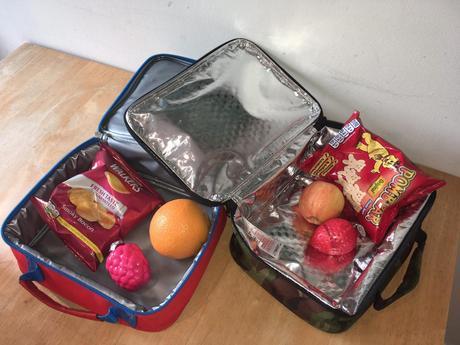
Millions of children could be marching off to school every day with their lunchboxes packed with fruit, sandwiches ... and harmful BACTERIA, according to a shock new study.
Seven in ten fabric lunchboxes tested contained mould which could trigger health problems like asthma and eczema.
One in five was found to contain Staphylococci - bacteria which usually lives in the body but which can cause serious food poisoning if ingested in food.
The survey of 15 primary age children at a school in Bath was commissioned by the makers of e-cloth, whose range is clinically proven to remove dirt, grease and over 99% of bacteria in your home using just water.
Spokesman Laurence Smith said: "The high volumes of non food-borne bacteria suggests that we aren't washing our hands before we pack or eat from our lunch boxes.
"It also shows that we aren't cleaning them properly either, which is allowing mould to spore and bacteria to grow.
"They might look clean, with their shiny interior, and often, all we'll do is shake out the crumbs but there is an underworld of invisible germs growing that we all need to be aware of."
In the tests, 73% of fabric lunch boxes tested were found to contain mould counts of up to 950 colony forming units (CFU) per 10 cm squared.
If left, these could continue to spore, causing health problems such as itchy eyes, migraines, eczema, coughs and asthma as well as aspergillosis - a more serious condition that can affect those with weakened immune systems.
More alarming was the presence of Staphylococci (20%), in particular, Staphylococcus Aureus (580 CFU in one case) and Enterococci (20%) - bacteria that is usually found inside our bodies rather than on food.
Staphylococci is common and around 1 in 3 people carry the bacteria harmlessly. Similarly, Enterococci are normally found in a person's gut or bowel without causing a problem. However, the NHS warn that eating food contaminated with either of these bacteria can lead to serious cases of food poisoning.
These bacteria are often found on frequently use surfaces (such as door handles, toilet flushes, desk and kitchen surfaces), which have been touched by unwashed hands, particularly following bathroom use.
The tests also found that yeast was present in over two thirds (66%) of lunch boxes tested, and high counts of up to 920 CFU of Enterobacteriaceae were also found hiding under our ham sandwiches.
TIPS FOR A HEALTHY LUNCH BOXDOWASH YOUR HANDS BEFORE YOU EAT - It might sound like obvious advice but bacteria can easily transfer from our skin onto our food. Soap and water is all you need.
CLEAN AFTER EVERY USE - bacteria and mould thrive in this type of environment and will easily spread if you don't remove them.
USE WHITE VINEGAR - Use neat to naturally disinfect your lunchbox or dilute with water. Then just wipe clean.
USE BICARBONATE OF SODA - Sprinkle it into your lunchbox and leave overnight - it's a great deodoriser
USE AN E-CLOTH - They're made up of millions of tiny fibres and are clinically proven to remove over 99% of bacteria as well as heavy dirt, grease and anything else you might find under the lid of your lunchbox, using just water.
DON'TUSE THE WASHING MACHINE - Most of the fabric lunchboxes will have care instructions on them, it's likely that the thermos layer will get damaged if you put them on a hot wash and there is no guarantee that you will have removed all of the germs using this method.
USE BABY WIPES - whilst the lunchboxes might look clean, these wipes are not designed for removing bacteria.
USE CHEMICAL CLEANING SPRAYS - Scientists from the University of Bergen in Norway say regular exposure to cleaning chemicals lead to more asthma and respiratory symptoms. These sprays also leave a chemical residue on surfaces which can then transfer onto the food you put in your lunchbox.
USE A DRY TEA TOWEL / DISH CLOTH - just like the baby wipes, it might make your lunch box look clean but all you're doing is moving the bacteria around rather than getting rid of it.
For more information visit www.e-cloth.com
ENDS

